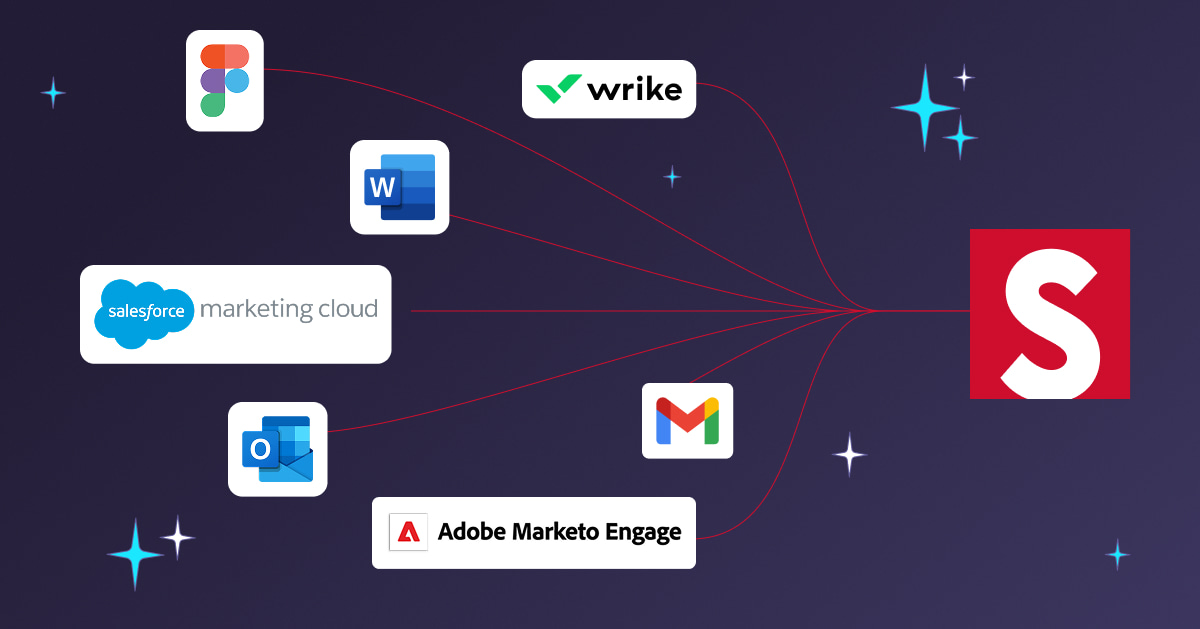Today we’re taking a break from email creation platforms to discuss broader marketing technology challenges with martech expert and CabinetM CEO Anita Brearton. This is part two of our interview with the veteran martech leader — if you haven’t read the first part, be sure to check it out now.
Anita has been part of the martech community from the very start. She is the co-founder and CEO of the marketing technology management platform CabinetM, a highly sought after industry speaker, columnist for CMS Wire, and member of the Boston angel investor group Golden Seeds.
In an interview conducted over email, Stensul SVP of Marketing Geoff Smith asked Anita about the challenges marketing operations teams face when managing their martech stacks, why marketing technology should be considered a revenue driver and which business units own their organization’s martech platforms.
Geoff Smith: Managing martech stacks seem to be almost as challenging as implementing and integrating individual marketing technology solutions. How can marketers overcome these challenges?
Anita Brearton: Marketing technology stacks represent a holistic view of all the technology related to customer acquisition and engagement used by the organization – this frequently extends beyond the marketing department to cover sales and customer service. A typical stack usually has one or more anchor platforms, a variety of products integrated with those anchor platforms, some independent standalone technology products and some internally developed technology.
Anchor platforms form the foundation of the tech stack — these products are the primary products used to communicate with customers and to store and manage customer information. Some examples include: CDPs, email marketing platforms and ESPs, marketing automation platforms, and CRMs. You can think of these as the command-and-control centers for the rest of the stack.
Do you know the difference between an ESP and an Email Creation Platform? Download our latest ebook “An Introduction to Email Creation Platforms” to find out how Email Creation Platforms can significantly reduce email creation times.
In many cases their implementation resembles a hub and spoke model with the anchor platform connected to many other components of the stack and with other anchor platforms. Gartner recently reported that only 18% have mastered their martech stack and that marketing leaders report only utilizing 58% of their martech stack’s potential. This is not a good state of affairs and needs to change.
Some of the reasons for these poor numbers:
- Many organizations have no visibility into the technology they are evaluating and buying. Without oversight there is no way to measure success.
- Organizations have purchased technology without considering the internal skills needed to operate and optimize the use of the technology and as a result the technology is not properly implemented or fully utilized.
- There is no underlying data architecture designed to make sure that data is clean, accurate, de-duped and getting to all the systems it needs to get to. Without this, integrations are poorly done if done at all. You cannot achieve performance goals without good, accessible data.
The list is actually much longer but you get the idea. Since we launched CabinetM we’ve seen
companies get much more serious about tracking, managing, and optimizing their martech stacks. This is as it should be.
GS: Do you consider marketing technology platforms revenue drivers?
AB: Martech is 100% a revenue driver. In some cases, it manages the complete customer journey, in others it’s a contributor to increased conversions. It is also a profit driver as a key expense component of the equation to calculate cost of customer acquisition. Bloated and poorly functioning tech stacks result in higher customer acquisition costs.
Martech also serves as the catalyst for digital transformation. Given its role in driving revenue, customer engagement, and cost of customer acquisition, it is the logical place to begin digital transformation initiatives. If you don’t have a handle on where you are you can’t move forward. It’s no longer acceptable to just laugh about not having any idea of what technology is being used or how it’s performing – martech is mission critical and needs to be managed with that in mind.
GS: What about martech management? Do you see any transitions happening as far as who owns marketing technology versus who is responsible for running the platforms?
AB: With the broad definition of martech as any technology that supports customer acquisition, engagement and retention, users will continue to be spread across the organization. As far as who will own marketing technology that remains to be seen. I think it will be either Marketing Ops, Sales Ops or Revenue Ops.
Revenue Ops is the latest trendy function, it still remains to be seen how many organizations will create a Rev Ops structure (with Marketing Ops and Sales Ops underneath).
One thing I don’t think will happen is that ownership will move to IT. I believe IT is an important partner in the implementation and management of technology, but they do not have customer related objectives such as revenue, engagement, and retention. Teams that are not directly connected to customer related objectives should not be making the decisions on the technology needed to achieve those objectives.
GS: Thank you so much for all the great insights on the martech industry. Before I let you go, I have one more question: What are you most looking forward to as we near a post-COVID world?
AB: For myself personally, traveling. For the business, the ability to interact in person with our team, our prospects and customers – I never thought I’d hear myself say “I can’t wait to go to a tradeshow.”
We couldn’t agree with Anita more — we can’t wait to interact with our teams, prospects and customers in person. Until then, we’re still going full force on our virtual events calendar. In fact, next week, Nicholas El-Khoury, stensul’s Director of Solutions and Enablement, will be presenting at the Martech Conference, a free virtual event for senior level marketers.
Nicholas will be hosting the “Bringing your email creation process into the 21st century” workshop, showing marketers how they can bring more speed and agility to their email marketing programs. If you are a marketing operations leader looking for ways to streamline your email creation process, you won’t want to miss it.




